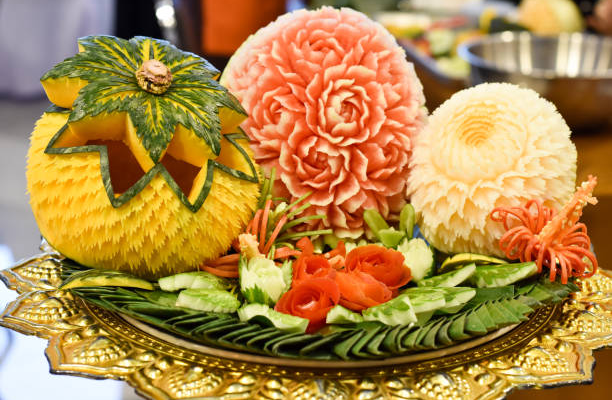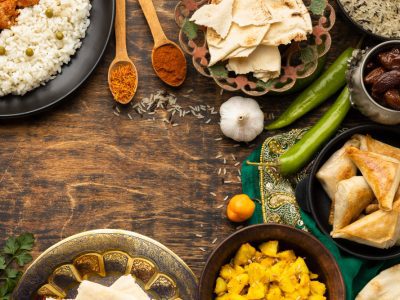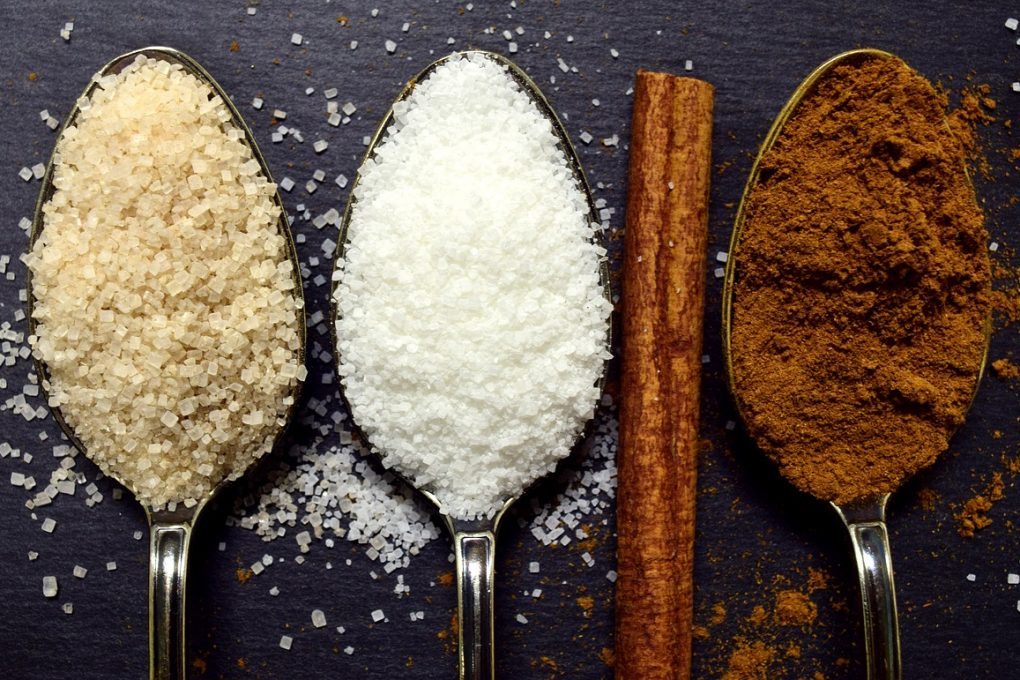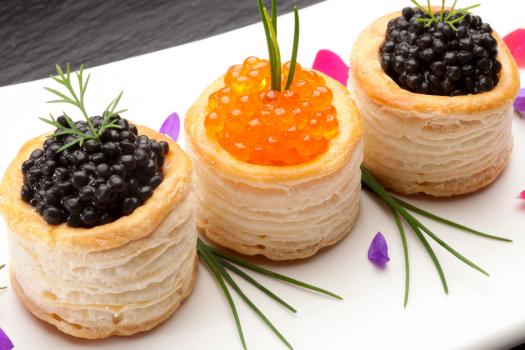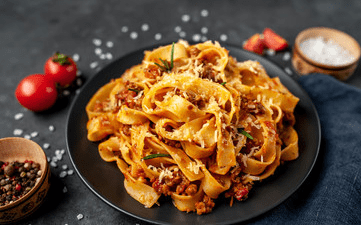Famous for its rich flavours, spices and textures, Indian cuisine has one more feature that’s often neglected but adds a visual feast to the dining experience – Indian food carving. Over centuries, ordinary fruits and vegetables were converted into extraordinary works of art using various techniques of Indian food carving. This ancient practice not only enhances dishes’ appearance but also exhibits India’s cultural diversity and artistic heritage.

History of Food Carving in India
Thai “Kae Sa Luk” or Japanese “Mukimono”, commonly known as food carving, can be traced back to different Asian cultures. In India, this art dates back to ancient times when elaborate feasts were held for royalty or during religious ceremonies. The intricate designs carved into fruits and vegetables were not merely for beauty; they also carried symbolic meaning and were considered auspicious.
Common Indian Food Carving Techniques
Watermelon Carving: One of the most popular fruits for carving in India is watermelon which is often transformed into floral patterns or even replicas of Hindu deities.
Radish Flower Carving: White radishes are frequently used to create delicate flower shapes that add elegance to salads.
Tomato Rose Carving: To make realistic looking roses from tomato skin, it should be peeled carefully first before shaping it accordingly.
Cucumber Leaf Carving: Thinly sliced cucumbers resemble delicate leaves after being carved lightly on their surface; these are usually used as decorations on appetisers or main course dishes.
Carrot Peacock Carving: Popular motifs in Indian culture such as peacock feathers can be created by skillfully carving carrots just like how feathers look like.
Tools Used For The Trade
To learn about Indian food carving techniques mastery requires a special set of tools:
Thai Pro Knife – A sharp thin-bladed knife necessary for making precise cuts
V-shaped knife – Used while creating grooves or complicated patterns
U-shaped knife – best suited for scooping out large portions from fruit/vegetable items
Melon baller – Creating spheres/half spheres becomes easy with this tool’s help!
Zester – Adds texture/fine details finishing touch at the last stage itself!!
Cultural Significance Of Food Carving In India
In many cultures around the world including ours here in our country (India), cooking isn’t just about feeding people; rather it should be viewed as an artistic expression through which we show respect towards others’ hospitality towards us who visit their homes regularly! This concept gets taken further when meals become beautiful pieces during festivals/occasions where elaborately decorated edible gifts called “prasad” are offered at temples after worshipping deities inside sacred places like temples across different states within our nation (India).
Contemporary Uses Of Indian Cuisine Decorative Arts And Crafts Training Programs With Workshops Corporate Events Weddings Schools Offer Classes Taught By Local Chefs Professional Instructor Led Courses Ideally Suited Towards Beginners Learning New Skills Such As Cooking Together Will Bring Everyone Closer To Each Other Through Shared Experiences Thus Making It More Fun And Enjoyable For All Who Participate Regardless Of Age Group!

Modern Applications of Indian Food Carving
While traditionally associated with grand feasts and religious ceremonies, Indian food carving has found its way into contemporary culinary scenes. Many high-end restaurants in Bangalore and other metropolitan cities now incorporate these techniques to create Instagram-worthy dishes that appeal to the city’s food-savvy population.
Some modern applications include:
- Themed Restaurant Decor: Carved fruits and vegetables are used as centerpieces or decorative elements in restaurant interiors.
- Food Photography Props: The visually stunning carved pieces make for excellent props in food photography and social media content.
- Cooking Classes and Workshops: Many culinary schools now offer specialized courses in Indian food carving techniques, catering to both professionals and enthusiasts.
- Corporate Events and Weddings: Carved fruit and vegetable displays are becoming increasingly popular at high-end events as conversation starters and unique decor elements.
Health Benefits of Food Sculpture
Food carving, though often overlooked, can have some surprising health benefits:
Increased consumption of fruits and vegetables: People are more likely to eat them when they look beautiful.
Mindful eating: When you take time to carve fruit or arrange it on a plate, you’re probably going to be more aware of what you’re putting in your mouth.
Stress relief: Carving is a meditative process that allows for creative expression and can release stress during difficult times.
Tips for Beginners in Indian Food Carving
If this has inspired you to give it a try yourself, here are some tips to help you get started:
- Begin with softer fruits such as watermelon or cucumber;
- Use sharp tools that are clean;
- Learn how to make basic shapes like flowers before attempting anything complicated;
- When starting out, use stencils; and
- Be patient with yourself – it’s not easy!

Embracing the Art in Bangalore’s Food Scene
Bangalore boasts a diverse food culture where many restaurants showcase their skills through eye-catching dishes using Indian food carving techniques. For these reasons alone, this city should be at the top of your list if you want beautiful meals served by innovative chefs who know how important presentation is!
Whether you’re an experienced cook looking for new plating ideas or just someone who wants to impress friends over dinner parties, learning how to do Indian food carving will definitely add another layer onto your cooking repertoire.
Explore More Culinary Adventures In Bangalore With HOGR App If You Want To Discover Restaurants That Showcase The Artistry Of Indian Cuisine Including Those Featuring Beautifully Carved Foods Then Download The HOGR App Now! You Can Find Traditional Eateries Or Fusion Restaurants Where Modern Meets Classic All Guided By This Amazing App That Will Take You On A Journey Through Different Cuisines Offered Throughout Our City So Don’t Wait Any Longer And Get Ready For A Delicious Adventure!
